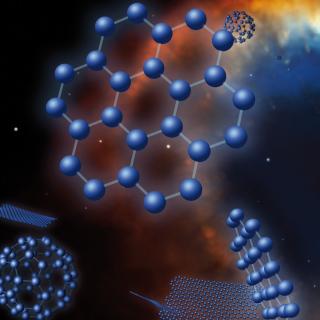Bibcode
Pozuelos, F. J.; Timmermans, M.; Rackham, B. V.; Garcia, L. J.; Burgasser, A. J.; Kane, S. R.; Günther, M. N.; Stassun, K. G.; Van Grootel, V.; Dévora-Pajares, M.; Luque, R.; Edwards, B.; Niraula, P.; Schanche, N.; Wells, R. D.; Ducrot, E.; Howell, S.; Sebastian, D.; Barkaoui, K.; Waalkes, W.; Cadieux, C.; Doyon, R.; Boyle, R. P.; Dietrich, J.; Burdanov, A.; Delrez, L.; Demory, B. -O.; de Wit, J.; Dransfield, G.; Gillon, M.; Gómez Maqueo Chew, Y.; Hooton, M. J.; Jehin, E.; Murray, C. A.; Pedersen, P. P.; Queloz, D.; Thompson, S. J.; Triaud, A. H. M. J.; Zúñiga-Fernández, S.; Collins, K. A.; Fausnaugh, M. M.; Hedges, C.; Hesse, K. M.; Jenkins, J. M.; Kunimoto, M.; Latham, D. W.; Shporer, A.; Ting, E. B.; Torres, G.; Amado, P.; Rodón, J. R.; Rodríguez-López, C.; Suárez, J. C.; Alonso, R.; Benkhaldoun, Z.; Berta-Thompson, Z. K.; Chinchilla, P.; Ghachoui, M.; Gómez-Muñoz, M. A.; Rebolo, R.; Sabin, L.; Schroffenegger, U.; Furlan, E.; Gnilka, C.; Lester, K.; Scott, N.; Aganze, C.; Gerasimov, R.; Hsu, C.; Theissen, C.; Apai, D.; Chen, W. P.; Gabor, P.; Henning, T.; Mancini, L.
Bibliographical reference
Astronomy and Astrophysics
Advertised on:
4
2023
Journal
Citations
17
Refereed citations
15
Description
Context. Several planetary formation models have been proposed to explain the observed abundance and variety of compositions of super-Earths and mini-Neptunes. In this context, multitransiting systems orbiting low-mass stars whose planets are close to the radius valley are benchmark systems, which help to elucidate which formation model dominates.
Aims: We report the discovery, validation, and initial characterization of one such system, TOI-2096 (TIC 142748283), a two-planet system composed of a super-Earth and a mini-Neptune hosted by a mid-type M dwarf located 48 pc away.
Methods: We characterized the host star by combining optical spectra, analyzing its broadband spectral energy distribution, and using evolutionary models for low-mass stars. Then, we derived the planetary properties by modeling the photometric data from TESS and ground-based facilities. In addition, we used archival data, high-resolution imaging, and statistical validation to support our planetary interpretation.
Results: We found that the stellar properties of TOI-2096 correspond to a dwarf star of spectral type M4±0.5. It harbors a super-Earth (R = 1.24 ± 0.07 R⊕) and a mini-Neptune (R = 1.90 ± 0.09 R⊕) in likely slightly eccentric orbits with orbital periods of 3.12 d and 6.39 d, respectively. These orbital periods are close to the first-order 2:1 mean-motion resonance (MMR), a configuration that may lead to measurable transit timing variations (TTVs). We computed the expected TTVs amplitude for each planet and found that they might be measurable with high-precision photometry delivering mid-transit times with accuracies of ≲2 min. Moreover, we conclude that measuring the planetary masses via radial velocities (RVs) could also be possible. Lastly, we found that these planets are among the best in their class to conduct atmospheric studies using the NIRSpec/Prism onboard the James Webb Space Telescope (JWST).
Conclusions: The properties of this system make it a suitable candidate for further studies, particularly for mass determination using RVs and/or TTVs, decreasing the scarcity of systems that can be used to test planetary formation models around low-mass stars.
Aims: We report the discovery, validation, and initial characterization of one such system, TOI-2096 (TIC 142748283), a two-planet system composed of a super-Earth and a mini-Neptune hosted by a mid-type M dwarf located 48 pc away.
Methods: We characterized the host star by combining optical spectra, analyzing its broadband spectral energy distribution, and using evolutionary models for low-mass stars. Then, we derived the planetary properties by modeling the photometric data from TESS and ground-based facilities. In addition, we used archival data, high-resolution imaging, and statistical validation to support our planetary interpretation.
Results: We found that the stellar properties of TOI-2096 correspond to a dwarf star of spectral type M4±0.5. It harbors a super-Earth (R = 1.24 ± 0.07 R⊕) and a mini-Neptune (R = 1.90 ± 0.09 R⊕) in likely slightly eccentric orbits with orbital periods of 3.12 d and 6.39 d, respectively. These orbital periods are close to the first-order 2:1 mean-motion resonance (MMR), a configuration that may lead to measurable transit timing variations (TTVs). We computed the expected TTVs amplitude for each planet and found that they might be measurable with high-precision photometry delivering mid-transit times with accuracies of ≲2 min. Moreover, we conclude that measuring the planetary masses via radial velocities (RVs) could also be possible. Lastly, we found that these planets are among the best in their class to conduct atmospheric studies using the NIRSpec/Prism onboard the James Webb Space Telescope (JWST).
Conclusions: The properties of this system make it a suitable candidate for further studies, particularly for mass determination using RVs and/or TTVs, decreasing the scarcity of systems that can be used to test planetary formation models around low-mass stars.
Related projects

Nucleosynthesis and molecular processes in the late stages of Stellar Evolution
Low- to intermediate-mass (M < 8 solar masses, Ms) stars represent the majority of stars in the Cosmos. They finish their lives on the Asymptotic Giant Branch (AGB) - just before they form planetary nebulae (PNe) - where they experience complex nucleosynthetic and molecular processes. AGB stars are important contributors to the enrichment of the
Domingo Aníbal
García Hernández

Helio and Astero-Seismology and Exoplanets Search
The principal objectives of this project are: 1) to study the structure and dynamics of the solar interior, 2) to extend this study to other stars, 3) to search for extrasolar planets using photometric methods (primarily by transits of their host stars) and their characterization (using radial velocity information) and 4) the study of the planetary
Savita
Mathur